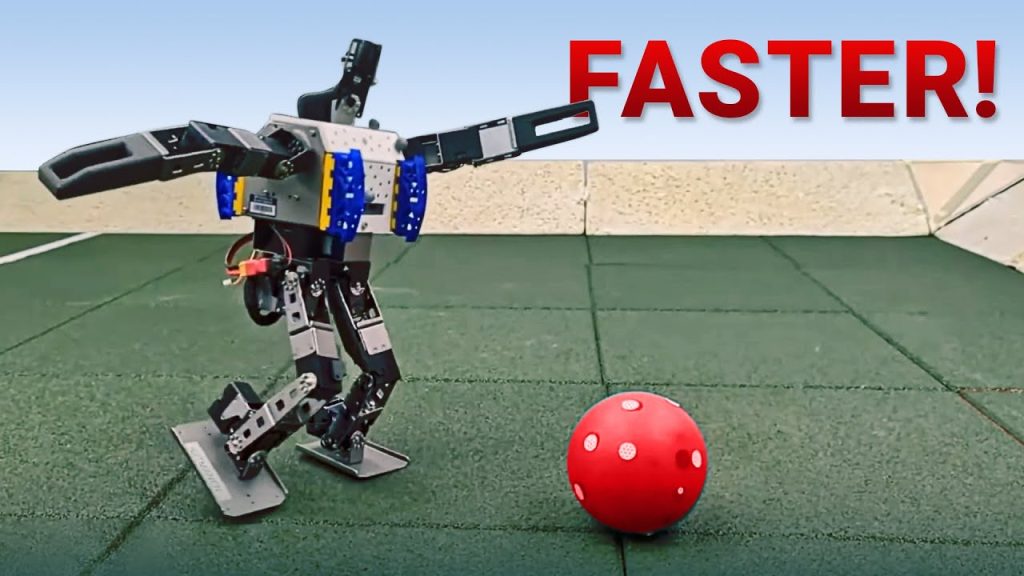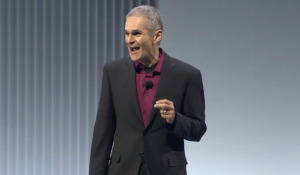Diving into the Future of Soccer: AI and Robotics

Ever stumbled upon a video where robots slowly transform from fumbling novices to skilled soccer players? It’s a glimpse into an ambitious project where artificial intelligence (AI) meets sports.
Initially, these robotic players could barely manage simple movements. But fast-forward through years of accelerated simulated training, and they’re practically pros. It’s a radical shift, showcasing the mind-boggling pace of AI development and its real-world applications.
From Clumsy Beginnings to Skilled Athletes
Imagine a video about robots learning to play soccer from scratch. Initially, they fumbled around, barely able to coordinate their movements. Fast forward five years in simulation time, and these AI-powered robots have transformed into competent players. Thanks to advanced computation, they achieved years of training in a condensed, accelerated timeframe, showcasing the incredible potential of AI simulation.
Simulation to Reality: The Journey
Next up, the video dives into a fascinating project called sim2real. Here, robots first master soccer in a virtual environment before stepping into the real world. It’s like leveling up from playing a video game to competing in an actual match. The transition from digital to physical demonstrates the robot’s ability to apply learned skills to real-life scenarios, raising excitement about future possibilities.
In a previous project without referees, chaos ensued with robots clashing without rules. This raised concerns about how the robots might interact when introduced into the real world. However, the video reassures that measures have been put in place to prevent such mayhem among the robotic players.
Learning the Ropes
The robots start with basic football training, which seems less than impressive at first. The robots, equipped with 20 different joints, face significant challenges in even simple tasks like standing or walking.
Their vision is limited, and their initial attempts at running are clumsy at best. This segment of the video emphasizes the difficulties faced during the early stages of training, setting a realistic expectation of the robot’s capabilities.
Despite these hurdles, there is a glimpse of progress. A successful penalty kick simulation in the game shows that improvement is possible, landing a robust kick that marks a milestone in the robot’s learning curve.
Growing Pains and Gains
Over time, the robots engage in more complex training exercises, including soccer matches against opponents. This part of the video shows them gradually becoming more adept at handling real-game scenarios.
They learn to adapt to disturbances and recover from falls more effectively, which highlights their growing resilience and adaptability. The excitement in the video peaks as the robots start demonstrating new abilities acquired from the continuous training.
New Skills Unveiled
The narration reveals that the robots have developed seven impressive new skills. From kicking moving balls and blocking shots with their body to getting up more efficiently and anticipating game developments, these skills reflect a significant leap in their capabilities.
Each new skill demonstrates a specific improvement in the robots’ performance, culminating in more elegant and effective movements on the soccer field.
The narrator’s enthusiasm is palpable as he describes these developments, conveying the transformative impact of continuous learning and adaptation in robotics.
A Marvel of Modern Robotics
The culmination of this training saga is a comparison between the robots’ learned behaviors and pre-programmed routines crafted by engineers. The AI-driven methods surpass the conventional ones, showing a marked improvement in speed, efficiency, and skill.
Reflections on the Future
As the video wraps up, it reflects on the broader implications of using AI to train robots. It emphasizes that the traditional, slower methods of training in the real world are no longer the only options. With virtual environments, these robots rapidly advance through years of training, showcasing what can be achieved in relatively little time.
This rapid development cycle not only saves time but also reduces the chances of injury during the training process, making it a safer, more efficient way to evolve robotic capabilities.
As the curtains close on this eye-opening journey into the future of robotics and AI, one can’t help but marvel at the strides made in transforming robots from clumsy prototypes to adept soccer players. This remarkable progress, encapsulated in accelerated, simulated training environments, not only showcases the power of AI but also hints at a future where robots could potentially compete alongside humans, bringing a new dimension to sports and technology.
The promise of such advancements extends beyond mere entertainment, suggesting practical applications in various domains where speed, efficiency, and adaptability are paramount. It’s a thrilling peek into a world brimming with possibilities, powered by ceaseless innovation and an unyielding quest for improvement.





